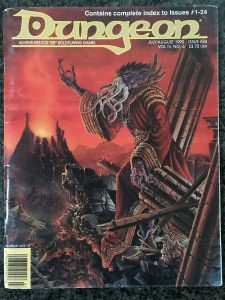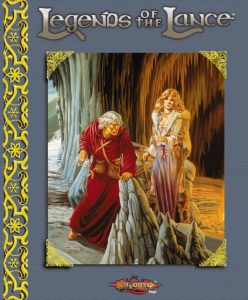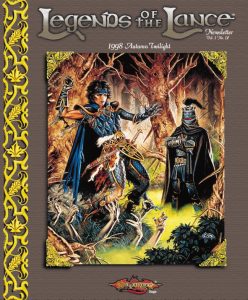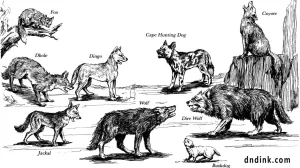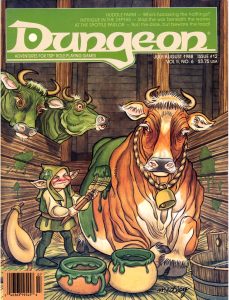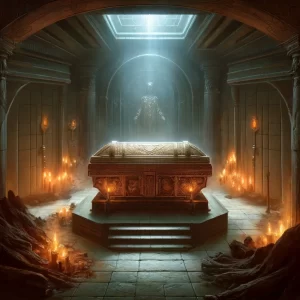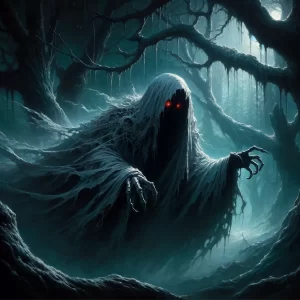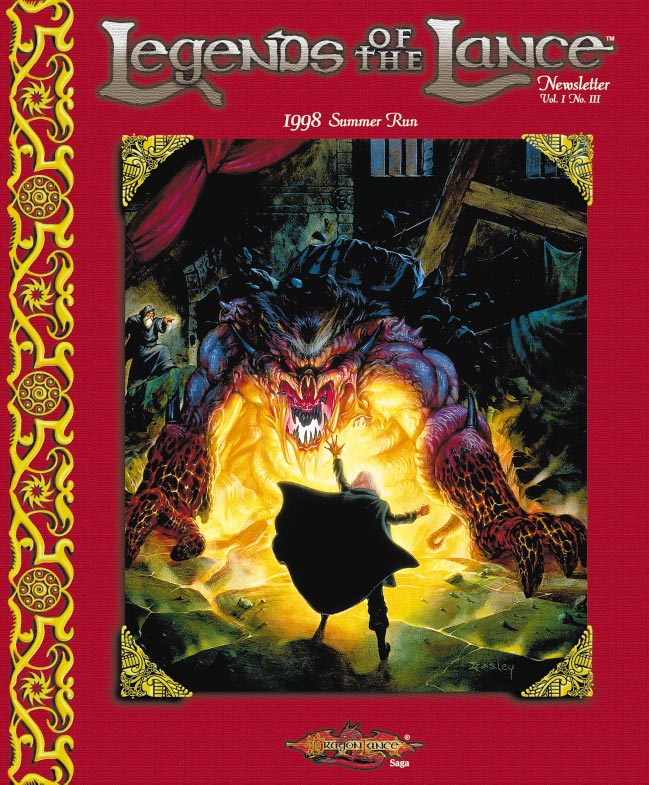
In the summer of 1998, the third installment of "Legends of the Lance" arrived under the title "Summer Run," delivering yet another vibrant, lore-rich chronicle for Dragonlance fans. This issue, packed with interviews, game enhancements, fiction, and sneak peeks, reinforced the franchise's dynamic legacy while showcasing the evolving creative forces behind the scenes.
An open letter from Margaret Weis kicks things off, offering updates on several key projects that had Dragonlance fans buzzing. Chief among them was the success of "The Soulforge," a novel chronicling Raistlin Majere's origin story, and the announcement of a sequel co-written with Don Perrin. Weis also teased the upcoming "War of Souls" trilogy, co-authored with Tracy Hickman, and spoke with enthusiasm about the new Sovereign Stone series set in a world conceived by Larry Elmore. Her warm, personable voice makes clear her ongoing love for the saga and its community.
The feature interview with Douglas Niles, one of TSR's most prolific and foundational contributors, is a highlight of the issue. Conducted by Pat McGilligan, the interview traces Niles' path from high school teacher to game designer, revealing how a chance interaction with Gary Gygax's daughter led him to discover Dungeons & Dragons. Niles shares insights into the early TSR creative environment, recounting the energy and camaraderie of designers working in a converted hotel, as well as the development process behind classic modules like "Against the Cult of the Reptile God."
Niles' reflections on the origins of the Dragonlance Saga provide historical context and an insider's view of how the idea took flight, with Tracy Hickman's ambitious multi-module vision outshining other early concepts. Though not on the ground floor, Niles would soon join the team shaping the War of the Lance. He offers an illuminating take on his contributions, especially his background in military gaming, which influenced the grand strategic planning of Krynn's epic conflicts. The interview closes with Niles' musings on writing fiction versus game design, and his deep, abiding affection for the world of Krynn, which he continued to explore through new novels set during the Chaos War.
Elsewhere in the issue, the whimsical yet imaginative spell "Khariod's Earth Image" by Bret W. Davenport blends illusion, enchantment, and geomancy, illustrating the creative freedom the SAGA rules system offers. Dawn Murin, art director for Dragonlance, shares her unique journey from pre-med studies and the Chicago art scene to helping craft the distinctive visual aesthetic of the Fifth Age, emphasizing Celtic-inspired designs and leatherbound book motifs.
Tom G. Harrison contributes a thoughtful rules supplement on poison in the SAGA system, expanding upon its effects beyond the binary of life or death. His optional mechanics introduce variables for strength, speed, and debilitating consequences, all with clear guidance for Narrators seeking greater nuance in their campaigns.
Sue Weinlein Cook's massive bibliography of Dragonlance books and games, titled "The Current, the Rare, and the Hard to Find," is a collector's dream. It documents TSR's sprawling legacy of novels, modules, supplements, and merchandise with notes on availability, making it one of the most valuable reference pieces for fans and archivists alike.
"The Herald's Report," a fictionalized lore section presented as in-world correspondence from Iryl Songbrook, delivers updates on political and magical upheaval across Krynn. Stories include escalating tensions among the minotaurs of Mithas, a tax riot in Jelek sparked by poor communication, and a mysterious incident in the Wind Dancer Peaks involving a winged beauty and a prince driven mad. This rich narrative segment continues to ground game developments in compelling storylines.
Mike Selinker introduces the Marvel Super Heroes Adventure Game, a new SAGA-powered RPG that brings the narrative-driven card mechanics into the Marvel Universe. With familiar elements like the Fate Deck and a new stat called Edge, this crossover exemplifies how the core mechanics of the Fifth Age can adapt to other genres.
Finally, the newsletter previews upcoming Dragonlance releases including "Citadel of Light," "Spirit of the Wind," "The Art of the Dragonlance Saga," "The Bestiary," and "Seeds of Chaos." Paired with details on Gen Con events, seminars, and live-action playtests, the issue celebrates both the enduring past and the bold, experimental future of Dragonlance.
"Summer Run" delivers on all fronts - a rich blend of nostalgia, innovation, and community spirit. It is a snapshot of Dragonlance during a time of creative expansion, when game designers, writers, and artists embraced the freedom of the Fifth Age while continuing to honor the saga's storied legacy.
